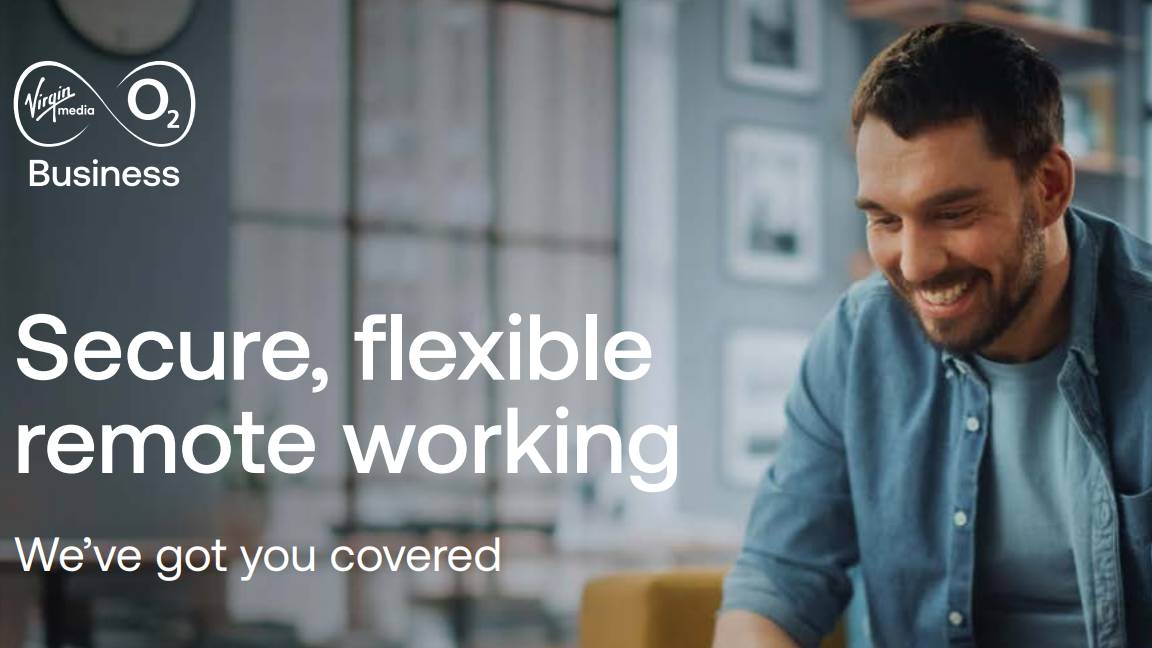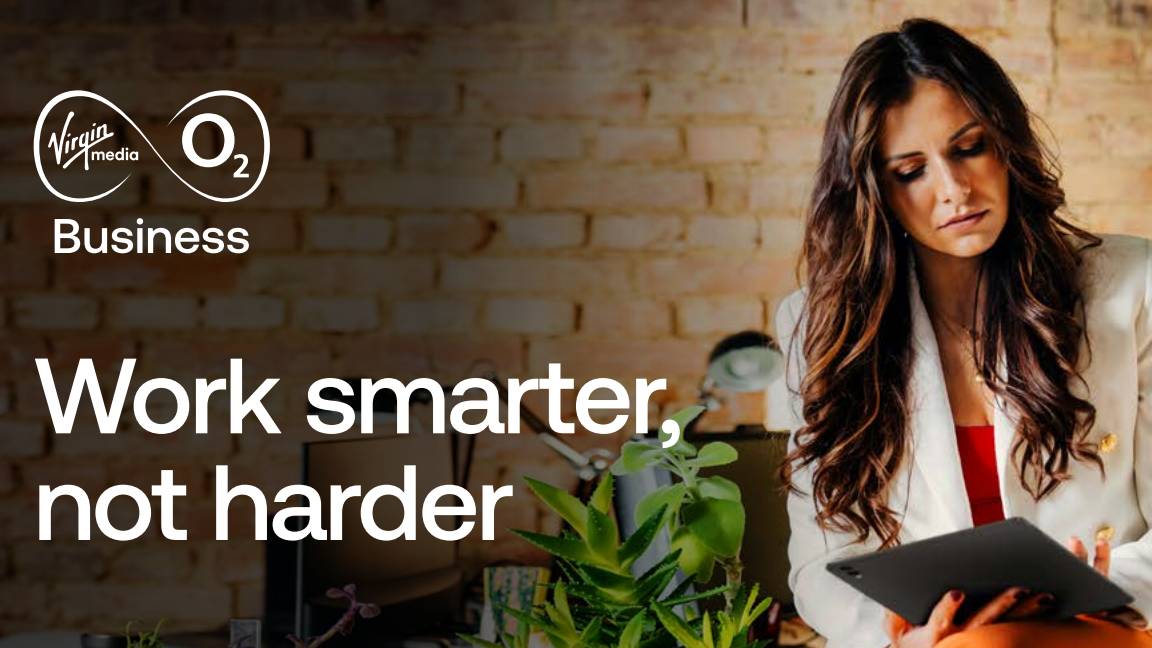IT Pro Panel: Why CIOs have embraced hybrid working
IT leaders aren’t going back to the office full-time - and some aren’t going back at all


Calling the past twelve months unusual would be a gross understatement. Thankfully, however, things are slowly starting to return to normal; vaccine programmes are continuing to roll out and case numbers are generally declining across the country. As the risk of infection falls, organisations are planning for their post-COVID future.
For those who moved to remote working, one of the most important questions they’re considering is how - or, in some cases, if - they want to return to the office. Very few businesses are envisaging a complete return to their pre-pandemic working patterns, however. For most, the office they go back to is going to look drastically different to the one they left behind.
In this month’s IT Pro Panel discussion, we asked our panellists how they’ve approached the return to the office; how their attitudes to physical workspaces have changed, the alterations that they’re making to suit their new patterns, and what the future of workplace collaboration looks like to them.
The pandemic has affected each of their organisations in different ways. For Natural History Museum CIO Alison Davis, it meant closing the museum to visitors, but while the doors will be opening again for guests on 17 May, back-office staff aren’t planning to return until the following month, when lockdown restrictions are set to be fully lifted.
As the CTO of Milton Keynes University Hospital Trust, meanwhile, Craig York’s job has never been more important. IT teams, support staff and clinicians across the trust have been working from home where possible during the pandemic, but York’s IT team are now starting to return to the office for two days a week.
Some of Moonpig’s staff have also gone back to the office; CTO Peter Donlon says that office space has been made available for anyone who wants it, but notes that only a very small percentage have taken advantage of it. Teams within other organisations, meanwhile, have left the office behind for good.
“I had a basic team on-site throughout, to deal with hardware support, but don't expect we'll be going back fully ever again for the whole team,” says SafetyKleen CIO Pat Colombo. “Given the nature of what we do, we can't all work remotely, but back-office staff, and especially IT, have proven that they can support the business from home.”
Get the ITPro daily newsletter
Sign up today and you will receive a free copy of our Future Focus 2025 report - the leading guidance on AI, cybersecurity and other IT challenges as per 700+ senior executives
All of our panellists confirmed that both they and their organisations were planning to continue working remotely on either a full or part-time basis for the foreseeable future, but there are some exceptions to this. Like Colombo, York had to make sure that his service and support teams had an on-site presence over the course of 2020, and he’s also keen to ensure that flexible working arrangements benefit all staff equally.
“One concern for us is the cultural thing of some people having more opportunity to work flexibly in their roles than others,” agrees Davis. “That should resolve over time, as new folks are being hired, but while this is a new change, we're sensitive to the potential concern from those who can't benefit.”
Despite the less-than-ideal conditions, however, York says that working from home has been hugely popular among staff, and the idea has gained buy-in from the Trust’s executive leadership.
“We have an off-site admin building, for IT, finance and HR, and pre-pandemic, we wouldn’t have considered having such large groups working from home. A good admin example is our different finance teams all working from home and being able to complete month-end and year-end accounts without anyone attending on-site. From a clinical perspective, we've had medical consultants write to the CEO to rave about how productive it can be to occasionally work from home, with secure access to all systems but without the long commutes.”
“So far it's been working okay the way it is for over a year, and for some of us with long commuting times, working from home helps both the company and the employee,” says Colombo, “as at the end of the day, time that used to be spent commuting - three to four hours in my specific case - is now used for work instead.”
“I think that Covid working has helped to overcome some of the executive reservations about home working, but it will be interesting to see what happens,” Davis adds. “I've been stressing that managers need to allow continued remote meeting attendance - a lot of us have a longish commute (mine is about 3 hours per day) so once you have one on-site meeting a day, that's a day you have to come in… it doesn't take many of those to scupper flexible working.”
In fact, it may not surprise you to learn that according to our panellists, the concept of ongoing flexible working has been almost universally popular. Mirroring the general trend among businesses, most of our panellists’ staff will be spending at least two or three days a week working from home even once offices reopen.
“We expect most of our head office teams to be working in a hybrid way going forward,” Donlon says, “but with a large variance between those who want to be in the office semi-frequently and those who want to be in very occasionally.”
Unsurprisingly, the biggest drawback of working from home from our panellists’ perspective has been the lack of face-to-face interaction. Part of the reason York’s team has started going back into the office is to allow some of their new starters who were onboarded during lockdown to meet in person.
“This is important,” he emphasises; “while WFH is great and has very few barriers, collaboration still benefits from some in-person conversations and interaction.”
The Natural History Museum is also in the same boat, and Davis reveals that the organisation is addressing this with the somewhat paradoxical move of bringing the leadership team into the office for an away day. It might sound confusing, but as she points out, home working is now the norm.
“Some of our executive board have never met each other face to face,” she explains.“Our HR director, our comms director and most crucially our chief executive all started under lockdown. I only started six weeks before - so there's been quite a lot of change!”
The pandemic has re-emphasised the importance of in-person collaboration for many organisations, and several of our panellists report that their physical premises are going to be reworked with this in mind.
“We have been looking at our office spaces and how we can make them work better for this hybrid world going forward,” says Donlon. “I do think there will be some learning as we go. Personally, I think we may see a spike in people wanting to go back to the office as things open up, until they're reminded what commuting is like!”
York, meanwhile, will be opening up various areas within the Trust’s existing footprint to different teams within the business, including clinical staff. Rather than arbitrarily sectioning off different buildings, existing resources will be deployed more flexibly within the same footprint.
Davis is also trying to make greater use of multiple buildings. In addition to its main location in South Kensington, the museum has another site at Tring, with a third research centre currently under construction in Harwell, which she says is helping the organisation adapt to a flexible, multi-site model.
“The Museum doesn't have the option to reduce in size in the same way as a commercial organisation,” she says, “but there is the potential for us to use our space more effectively. One of our challenges is that we have a legal duty to maintain the collection for the nation, and that collection is constantly growing.”
Davis is also keen to stress that while staff have been working remotely for the past year, they haven’t been working flexibly, and this will require an adjustment period to get used to.
“We have a Future Ways of Working project for the Museum as a whole, which I'm leading. We're expecting that unless their role requires it or their personal circumstances or preferences make it desirable, that people will retain some level of flexible working. However, as we aren't working flexibly now, we are encouraging teams to experiment between June and the end of year, to decide what works for them.”
“We've been speaking to our teams a lot over the past 12 months to understand what a return to the office could look like,” Donlon adds, “and while there's definitely still an appetite for physical offices, the usage of those offices will look very different in the future as we embrace remote working long term.”
Moonpig has invested heavily in remote working, not just supplying employees with the relevant equipment and support, but also giving them additional funding to set up and improve their home working space in order to make it more enjoyable.
“It became clear pretty quickly that working from home for a day every now and again is very different to working from home every day. It was important for us that our employees had what they needed to work comfortably in their home environment,” explains Donlon.
“We were already in a good place for this,” York says. “We have large data lines into the hospital, Microsoft 365 and Azure are integrated well and all users are very secure, with all offsite apps having multi-factor authentication. There’s many more positive things than not. Struggles are often small, although they don't feel like that to individual users.”
One potential challenge that was raised by a number of panellists is managing meetings in a hybrid environment, and various strategies are being put in place to prevent a disconnect between those working from home and those in the office.
“The office needs to support our working principles going forward,” says Donlon. “If you take meetings, for example, I think what a lot of us have realised is that meetings work well when everyone is together and when everyone is remote but when you have a combination of both it works less well. So if we adopt a principle that unless everyone is in the same physical office that the meeting needs to be run remotely, more meeting rooms, phone booths, et cetera become a good solution to that.”
“We are also recommending continuing use of Microsoft Teams for all meetings,” Davis adds, “unless there is a conscious decision that it needs to be a face to face meeting. Interestingly, use of Teams Live has resulted in better all staff updates, I think. Anecdotally, there’s better attendance and people are more ready to ask questions than having to do it in person. I think we're probably also communicating more because it's easy to set up.”
Microsoft has been one of the clear winners of this pandemic, and almost all of our panellists have relied on its Teams platform over the past year to keep staff in contact with one another.
“I’d echo the importance of making effective use of those new features available, like Teams Live,” York says. “Our executive team now has several hundred staff on briefings, where there were dozens previously.”
“We were spending way too much on PowWowNow, for what was basically traditional conference calling,” Colombo explains. “By moving to Teams, a huge number of participants can join a meeting at no additional cost, and by adding an additional license to Teams, people that are unable to join via Teams can do so by dialling in. This reduces our costs quite dramatically, as the Teams license was already being paid for, and all we needed to add was Microsoft’s conferencing license to be able to add phone numbers to dial in to meetings.”
Other technical changes have been introduced to help deal with the post-pandemic operating environment - for example, York is using pre-existing capabilities within his software stack to track staff burnout - and many projects that had to be put on hold are now being restarted. Colombo is continuing with SafetyKleen’s drive to replace paper-based operations with handheld devices for field operatives, while York is pushing forward with the next phase of the Trust’s electronic patient record system.
While some investment and upgrade projects are getting back on track, however, the clear consensus was that the traditional model of office-based working is never coming back - and for our panellists, that’s very much a positive thing. Across the board, remote working has delivered benefits for productivity, technical adoption and staff flexibility, and although there are still some kinks to be ironed out, businesses now find themselves with a number of advantages.
“I think (and hope!) that this has been an eye-opener in how organisations can work flexibly,” Davis says. “We're still not out of the woods yet with COVID variants and I think we have a while (and probably another winter at least) to go through, before that becomes business as usual. So working flexibly also provides future resilience.”
“From my own point of view, I've just invested in a height-adjustable desk for my home office and I am confident that it is a worthwhile investment...so I'm putting my money, literally, where my mouth is on that thinking!”
To apply to join the IT Pro Panel, please click here to enter your details. Please note that we are not accepting applications from technology vendors at this time.
Adam Shepherd has been a technology journalist since 2015, covering everything from cloud storage and security, to smartphones and servers. Over the course of his career, he’s seen the spread of 5G, the growing ubiquity of wireless devices, and the start of the connected revolution. He’s also been to more trade shows and technology conferences than he cares to count.
Adam is an avid follower of the latest hardware innovations, and he is never happier than when tinkering with complex network configurations, or exploring a new Linux distro. He was also previously a co-host on the ITPro Podcast, where he was often found ranting about his love of strange gadgets, his disdain for Windows Mobile, and everything in between.
You can find Adam tweeting about enterprise technology (or more often bad jokes) @AdamShepherUK.
-
 Bigger salaries, more burnout: Is the CISO role in crisis?
Bigger salaries, more burnout: Is the CISO role in crisis?In-depth CISOs are more stressed than ever before – but why is this and what can be done?
By Kate O'Flaherty Published
-
 Cheap cyber crime kits can be bought on the dark web for less than $25
Cheap cyber crime kits can be bought on the dark web for less than $25News Research from NordVPN shows phishing kits are now widely available on the dark web and via messaging apps like Telegram, and are often selling for less than $25.
By Emma Woollacott Published
-
 Young tech professionals are shunning a full-time return to the office – unless it pays more
Young tech professionals are shunning a full-time return to the office – unless it pays moreNews Young tech professionals who entered the workforce post-pandemic expect on-site work to be paid more than remote options.
By Emma Woollacott Published
-
 ‘Employers must look at the bigger picture’: Brits aren’t keen on going back to the office, and enterprises pushing for it risk a talent exodus – 48% of UK professionals would quit if faced with a full RTO mandate as hybrid work remains popular
‘Employers must look at the bigger picture’: Brits aren’t keen on going back to the office, and enterprises pushing for it risk a talent exodus – 48% of UK professionals would quit if faced with a full RTO mandate as hybrid work remains popularNews Nearly half of professionals would consider quitting rather than returning to the office full time
By Nicole Kobie Published
-
 IT professionals aren’t budging on flexible work demands – and more than half say they’ll quit if employers don’t meet expectations
IT professionals aren’t budging on flexible work demands – and more than half say they’ll quit if employers don’t meet expectationsNews Analysis from Randstad shows 40% of UK-based IT pros have quit over a lack of flexible work options, while 31% of workers globally have done the same.
By Ross Kelly Published
-
 'The tide seems to be turning towards office attendance': 64% of hybrid business leaders want staff back in the office – but many worry that enforcing RTO mandates will drive employees away
'The tide seems to be turning towards office attendance': 64% of hybrid business leaders want staff back in the office – but many worry that enforcing RTO mandates will drive employees awayAnalysis Many UK business leaders want their staff back in the office more frequently, but they’re scared to implement return to office (RTO) mandates in fear of worker revolts.
By George Fitzmaurice Published
-
 Employees are dead set on flexible working arrangements – three quarters would turn down a role that didn't offer hybrid options as work-life balance becomes more important than pay
Employees are dead set on flexible working arrangements – three quarters would turn down a role that didn't offer hybrid options as work-life balance becomes more important than payNews New research shows workers are increasingly demanding flexible working arrangements from employers.
By Emma Woollacott Published
-
 Rugged devices
Rugged devicesWhitepaper A closer look at the challenges and rewards of fully supporting a flexible workplace
By ITPro Published
-
 Secure, flexible remote working
Secure, flexible remote workingWhitepaper A closer look at the challenges and rewards of fully supporting a flexible workplace
By ITPro Published
-
 Work smarter, not harder
Work smarter, not harderWhitepaper A closer look at the challenges and rewards of fully supporting a flexible workplace
By ITPro Published